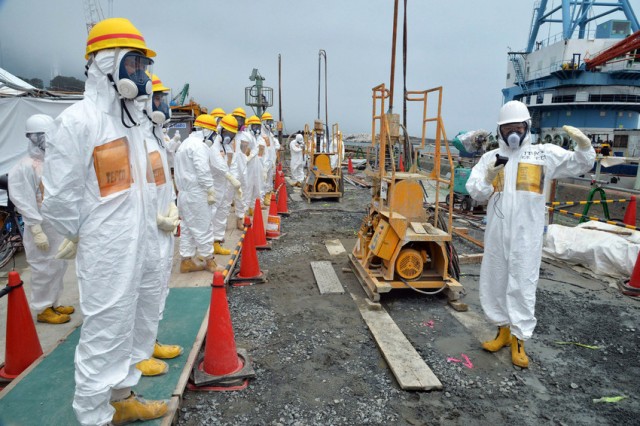
The other morning on KQED's "Forum" program, we invited listeners to call and write with ideas about what we ought to be covering in the coming year. We got lots of ideas for coverage on health, technology, arts and culture, politics and the economics of living in this region. We also heard requests for coverage on science and environmental subjects, including this one from a caller named David:
I would love to see some coverage of the radiation spread from Fukushima Daiichi. I feel woefully uninformed, and I've heard reports that the radiation releases could affect the whole West Coast, which seems extreme except I've been hearing things. Hearing what its impact is, both short term and long term, would be great.
In fact, KQED has been getting questions for months about the West Coast impact from the Fukushima nuclear plant disaster that followed Japan's 2011 earthquake and tsunami. The questions often appear to be prompted by claims made in blog posts like this: 28 Signs That the West Coast Is Being Absolutely Fried by Radiation from Fukushima -- posts that appear to be long on hyperbole, alarmism and cherry-picked facts and short on data and reasoning. In response, one of our science editors came up with a letter (see the end of this post) that points to what we believe to give well informed and well researched sources of information on the local impact of Fukushima radiation.
The questions are still coming, stirred partly by concern over the impact of one of the world's most serious nuclear disasters and partly by the continuing stream of Internet "evidence" suggesting radiation from Fukushima is poisoning us and wreaking havoc on the environment. Just this week, for instance, there's this: Fishermen in Mexico discovered conjoined gray whale calves off the Baja coast. That much is true, and from what early stories say, it could be the first time conjoined gray whales have ever been seen. But you don't have to go far to find reports like this, on a site called The Voice of Russia: Two-headed whale found in Mexico. Is Fukushima radiation responsible?
Huh? Who said anything about a two-headed whale? Or Fukushima? The question in the headline is sensational and leading, and the answer the piece gives is of the "no one knows — but it could be!" variety. (For a more sober take, check Slate: No, That Conjoined Whale Calf Was Not Caused by Fukushima.)
The Video From Surfer's Beach